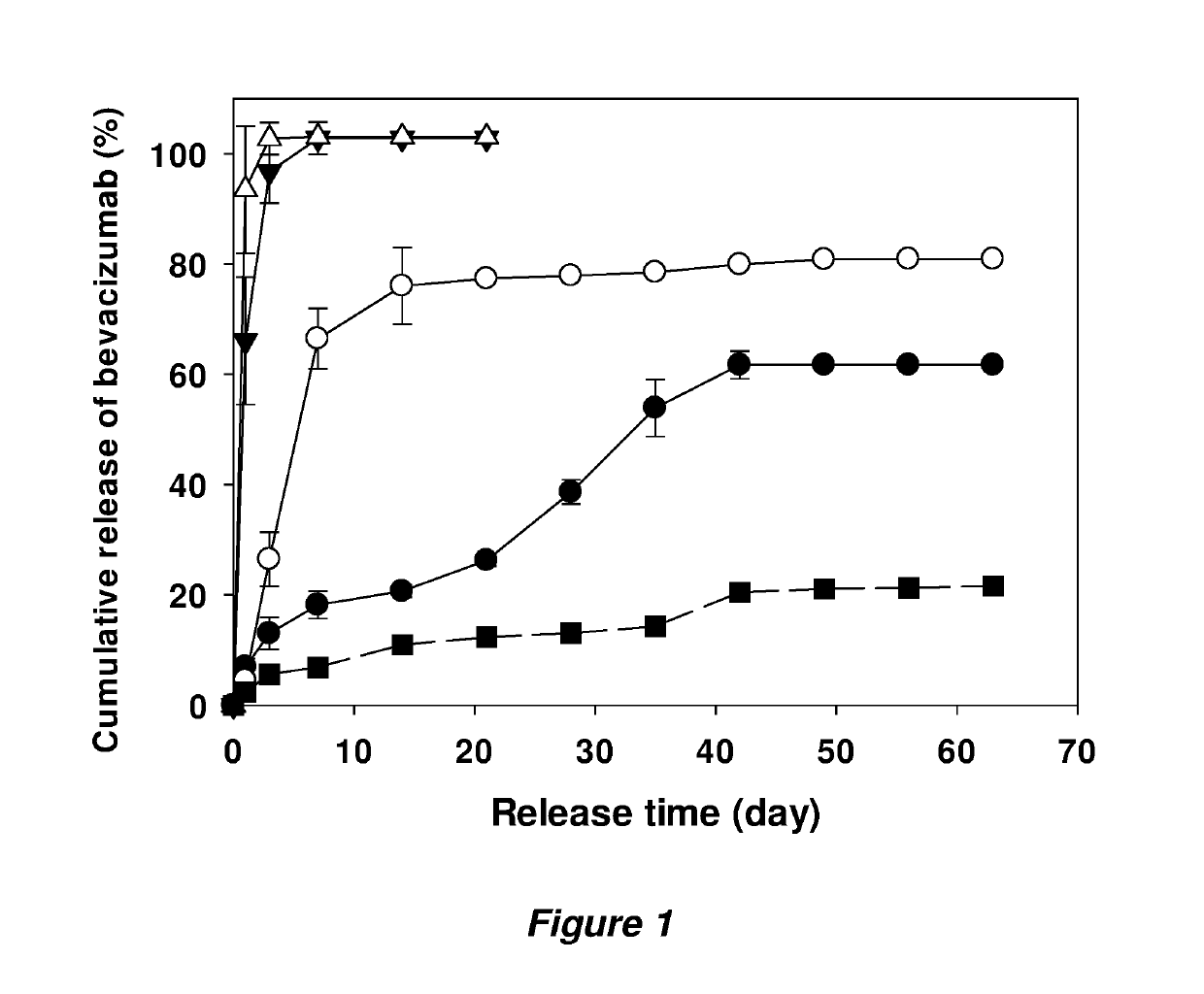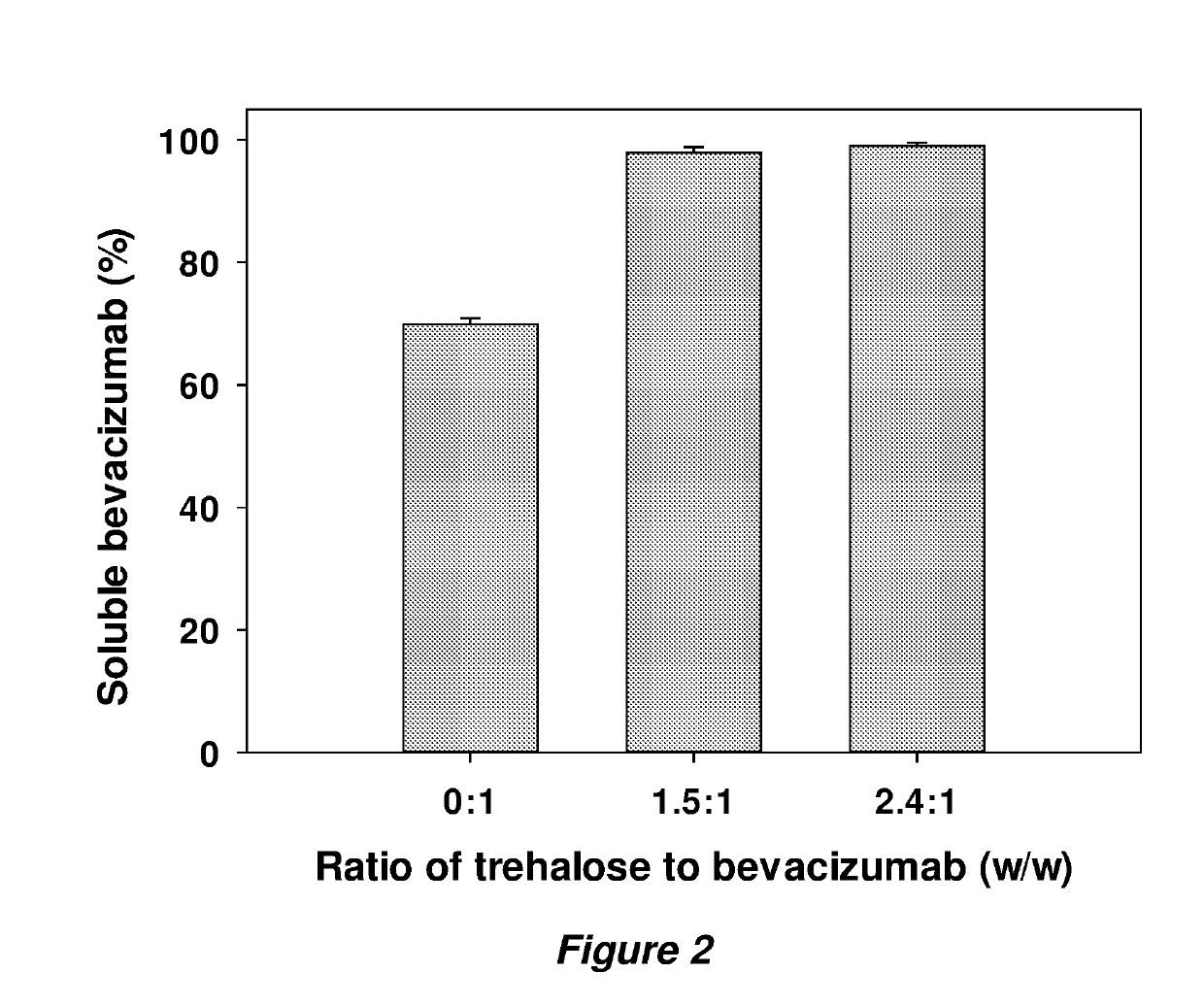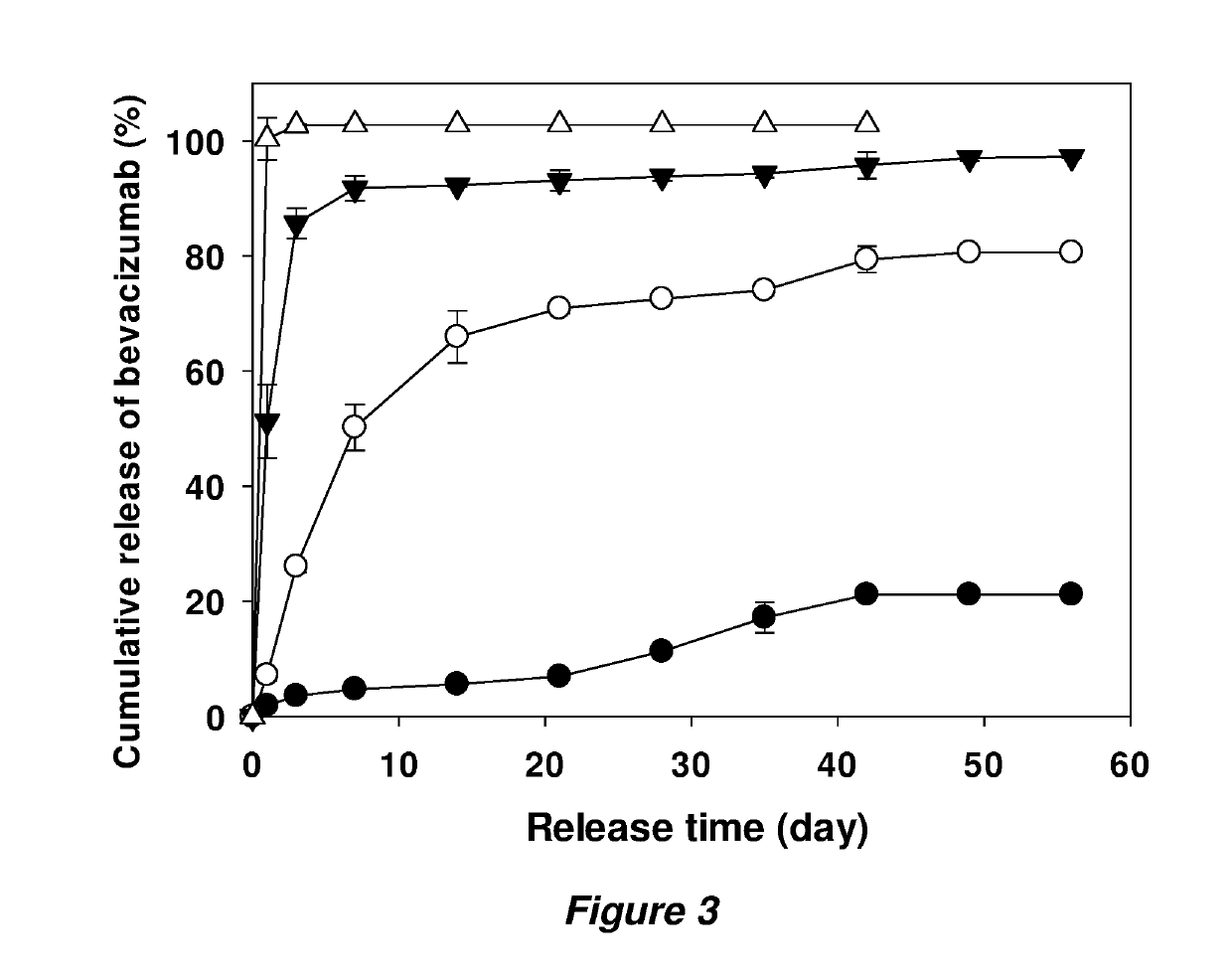Coated implants for long-term controlled release of antibody therapeutics
- Summary
- Abstract
- Description
- Claims
- Application Information
AI Technical Summary
Benefits of technology
Problems solved by technology
Method used
Image
Examples
example 1
Studies of Anti-VEGF Antibodies
Materials
[0050]The Avastin®, commercial solution of bevacizumab was purchased from the pharmacy and used within its shelf-life period. PLGA 50:50 (inherent viscosity=0.64 dL / g and Mw=54.3 kDa, ester terminated) was purchased from LACTEL Absorbable Polymers (Birmingham, Ala.). Trehalose dihydrate (trehalose), MgCO3, guanidine hydrochloride, DL-dithiothreitol (DTT), ethylenediamine-tetraacetic acid (EDTA), Na2HPO4, NaH2PO4, anti-human IgG-alkaline phosphatase antibody produced in goat and p-nitrophenyl phosphate liquid substrate system (pNPP) were purchased from Sigma-Aldrich Chemicals (St. Louis, Mo.). Tween 80 (10%), acetone, KH2PO4, K2HPO4, KCl, phosphate buffered saline (PBS), Amicon Ultra-15 Centrifugal Filter Units (10,000 MWCO), silicone rubber tubing, and Coomassie plus reagent assay kit were purchased from Fisher Scientific (Hanover Park, Ill.). Recombinant human vascular endothelial growth factor (VEGF) was a generous gift from Genentech.
Prepar...
example 2
n in a Rabbit Retinal Leakage Model
[0067]Materials, preparation of antibody powder, and preparation of coated implants were as in Example 1.
Measurement of Antibody Loading in Implants
[0068]Implants (3-5 mg) were dissolved in 1 mL of acetone for 1 h and centrifuged to precipitate protein. PLGA dissolved in supernatant was removed and the protein pellet was washed with acetone and centrifuged three times more to remove residual PLGA. The pellet was then air-dried, reconstituted in 0.5 mL of PBST (phosphate buffered saline with 0.02% Tween 80, pH 7.4) at 37° C. overnight and analyzed by SE-HPLC. The mobile phase (0.182 M KH2PO4, 0.018 M K2HPO4, and 0.25 M KCl [pH 6.2]) was run at a flow rate of 0.5 mL / min through a gel column (TSK-GEL G3000SWx1; Tosoh Bioscience, Tokyo, Japan), and elution was monitored at 280 nm. The volume of injection was 50 μL, and the running time was 30 minutes. All samples were filtered through 0.45 am filter. Extracted loading was calculated by the following eq...
example 3
Release Study of PLGA-Encapsulated Bovine Serum Albumin (BSA)
[0071]Materials, preparation of BSA powder, and preparation of coated implants were as in Example 1 with slight modifications. For BSA powder, the same composition (trehalose:BSA=1.5:1, w / w) as applied in Example 1 was used with BSA as an additional model protein in place of bevacizumab. The resulting BSA powder was suspended into 50% (w / w) PLGA solution in acetone with 3% (w / w) MgCO3 in a 2-mL centrifuge tube, then mixed and transferred into a 3-mL syringe. The suspension was extruded into silicone rubber tubing (I.D.=0.5 mm), then dried at room temperature for 48 h followed by vacuum drying at 40° C. and −23 in. Hg vacuum for an additional 96 h. The final dried implants were obtained by removal of silicone tubing. For coated implants, the obtained core implants were put back into silicone tubing (I.D.=0.8 mm) and 70% pure PLGA solution in acetone within a 3-mL syringe was extruded over the core implants to coat the surfa...
PUM
| Property | Measurement | Unit |
|---|---|---|
| Length | aaaaa | aaaaa |
| Length | aaaaa | aaaaa |
| Fraction | aaaaa | aaaaa |
Abstract
Description
Claims
Application Information
 Login to View More
Login to View More - R&D
- Intellectual Property
- Life Sciences
- Materials
- Tech Scout
- Unparalleled Data Quality
- Higher Quality Content
- 60% Fewer Hallucinations
Browse by: Latest US Patents, China's latest patents, Technical Efficacy Thesaurus, Application Domain, Technology Topic, Popular Technical Reports.
© 2025 PatSnap. All rights reserved.Legal|Privacy policy|Modern Slavery Act Transparency Statement|Sitemap|About US| Contact US: help@patsnap.com



